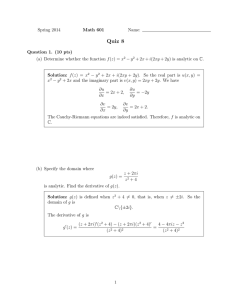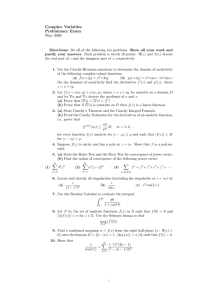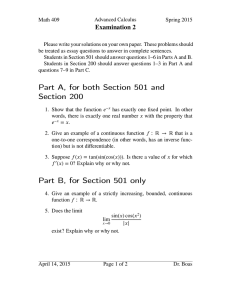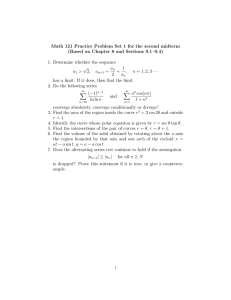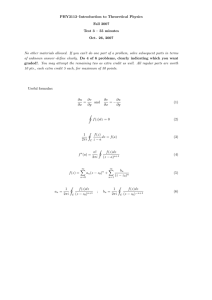Complex Variables
advertisement
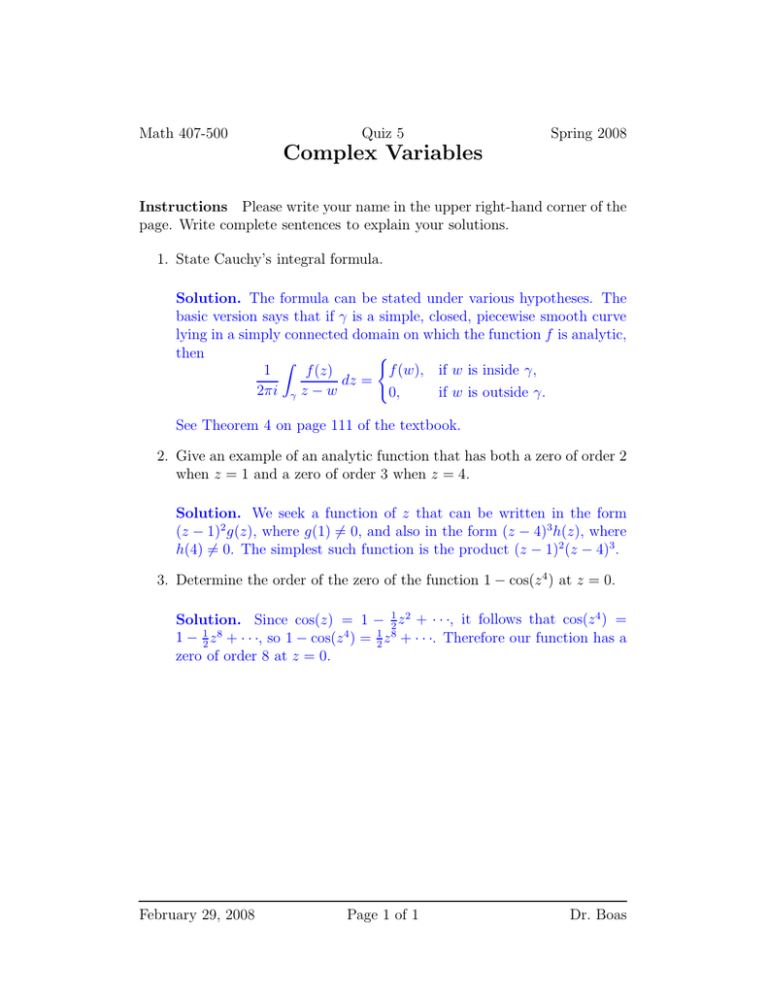
Math 407-500 Quiz 5 Spring 2008 Complex Variables Instructions Please write your name in the upper right-hand corner of the page. Write complete sentences to explain your solutions. 1. State Cauchy’s integral formula. Solution. The formula can be stated under various hypotheses. The basic version says that if γ is a simple, closed, piecewise smooth curve lying in a simply connected domain on which the function f is analytic, then ( Z f (w), if w is inside γ, 1 f (z) dz = 2πi γ z − w 0, if w is outside γ. See Theorem 4 on page 111 of the textbook. 2. Give an example of an analytic function that has both a zero of order 2 when z = 1 and a zero of order 3 when z = 4. Solution. We seek a function of z that can be written in the form (z − 1)2 g(z), where g(1) 6= 0, and also in the form (z − 4)3 h(z), where h(4) 6= 0. The simplest such function is the product (z − 1)2 (z − 4)3 . 3. Determine the order of the zero of the function 1 − cos(z 4 ) at z = 0. Solution. Since cos(z) = 1 − 21 z 2 + · · ·, it follows that cos(z 4 ) = 1 − 12 z 8 + · · ·, so 1 − cos(z 4 ) = 21 z 8 + · · ·. Therefore our function has a zero of order 8 at z = 0. February 29, 2008 Page 1 of 1 Dr. Boas

